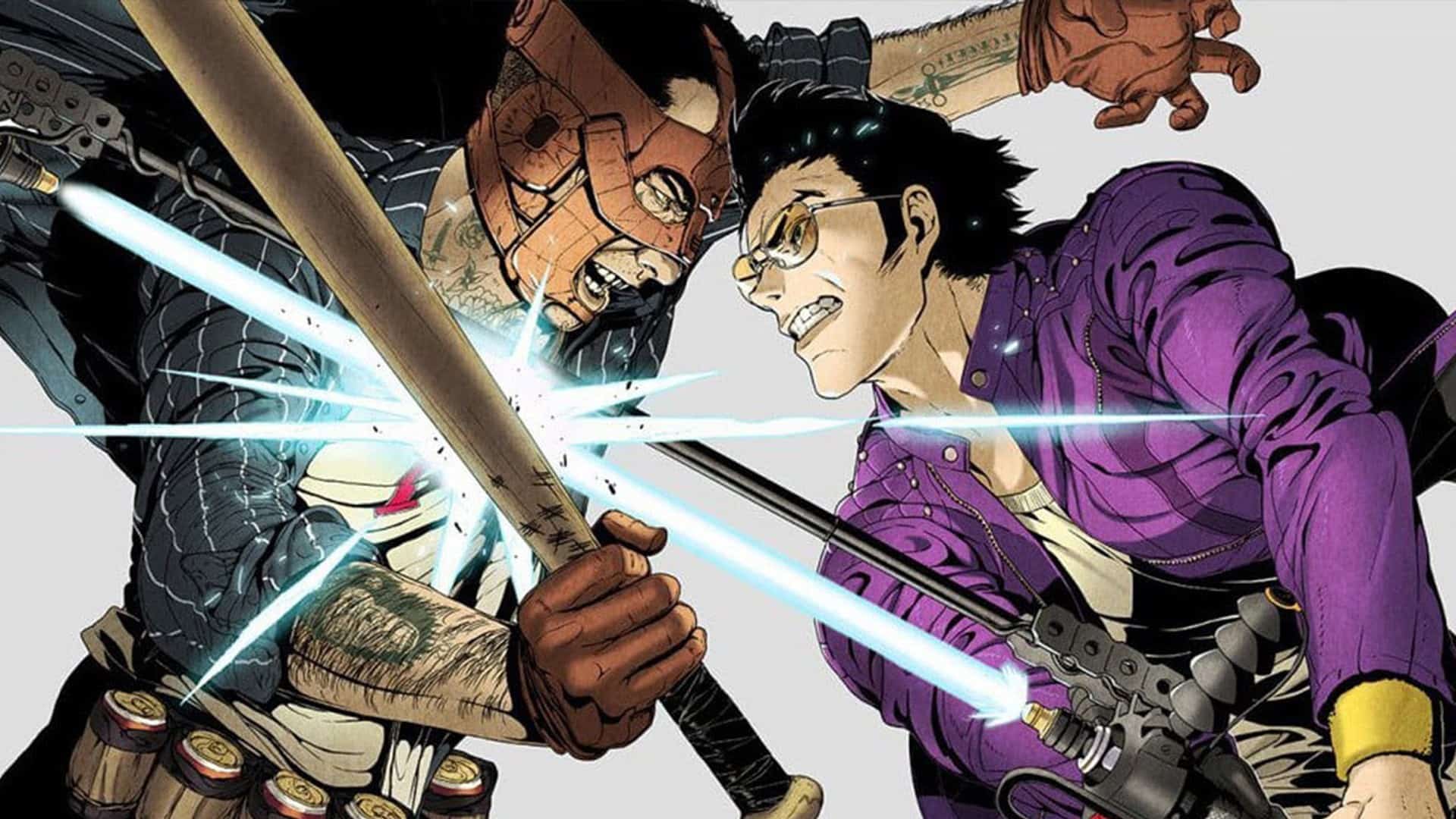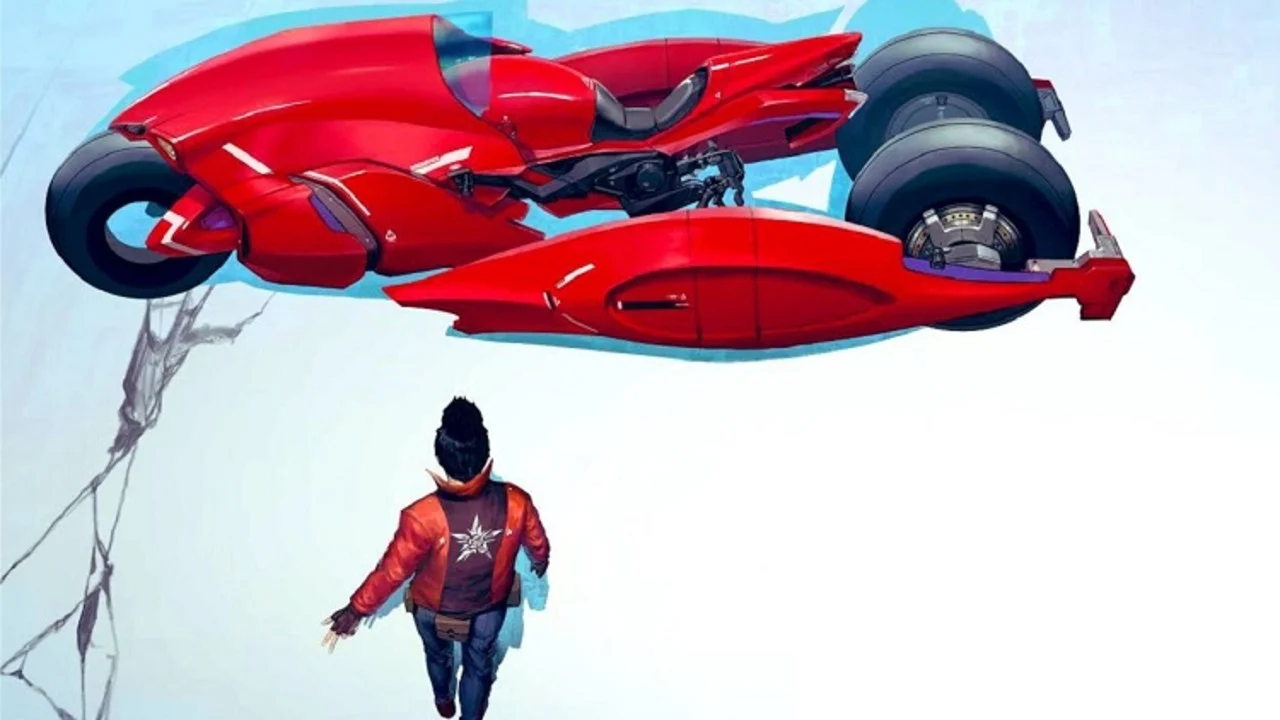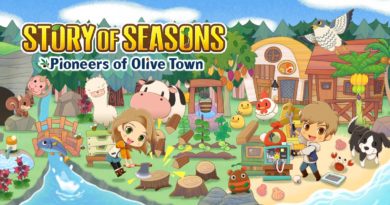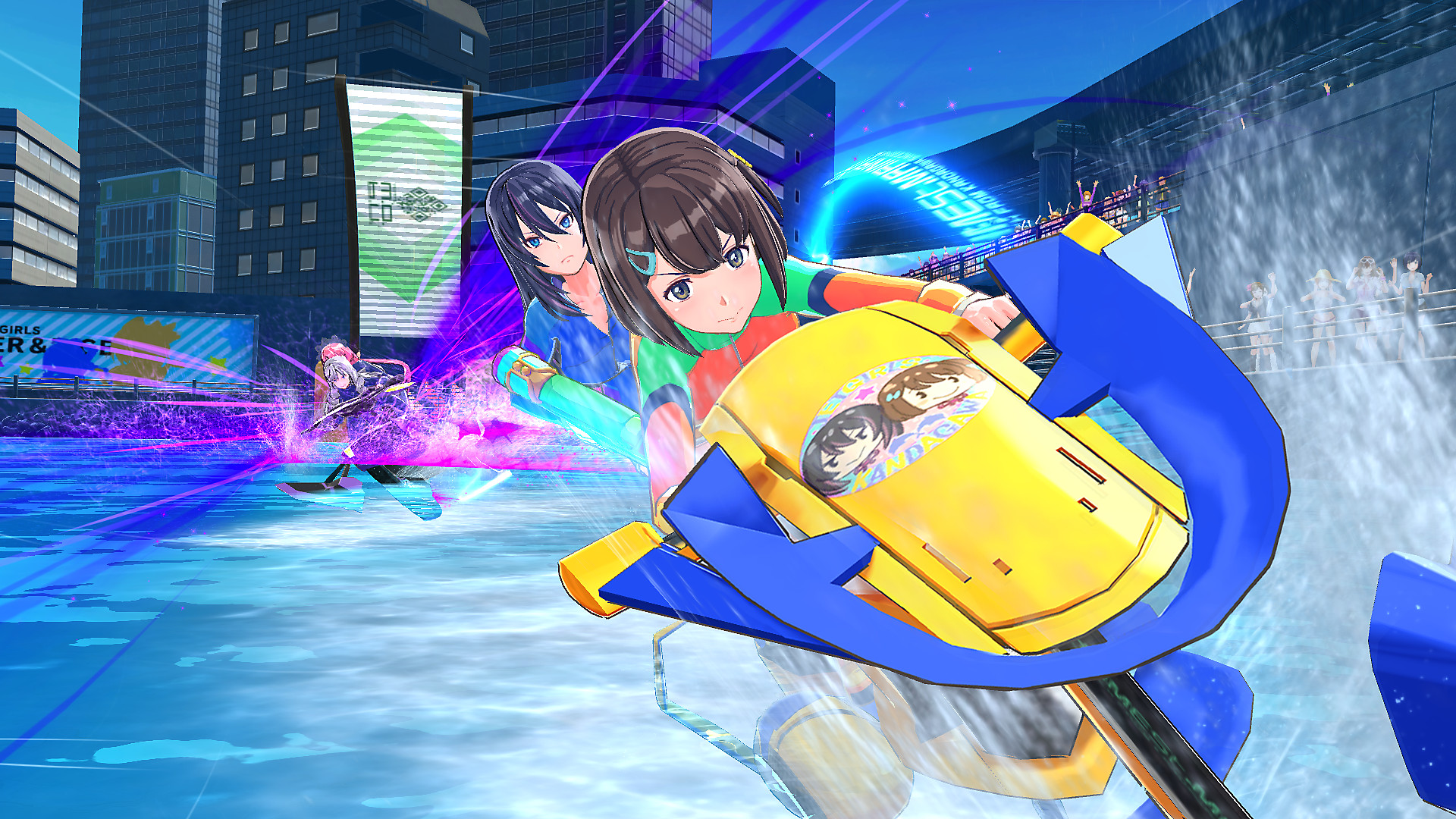Travis Strikes Again: No More Heroes Review – Has Suda51 Struck Out…?
Did you enjoy the third person, action adventure heroics of Travis Touchdown? Well, prepare to be surprised. The Finger Guns review;
There’s a certain degree of auteur-ism in videogames, much like there is in film-making, that you can immediately associate with that director before you’ve played/watched it. For every Kubrick and Herzog, we (as gamers) get a Swery, a Suda51 and even Kojima now with his upcoming…whatever Death Stranding is.
With a Suda or Swery venture, you always have some idea of what to expect. You ask anyone about Deadly Premonition, for example, which is the pinnacle of marmite gaming. Divisive games and auteur directors go hand in hand, with games like the aforementioned, Killer7, Lollipop Chainsaw and Shadows of the Damned that are very much products of their ‘wacky’ directors. Sometimes it works, sometimes it doesn’t. Some get elevated to cult classic status, whilst others fall by the wayside and are easily forgotten. Anyone remember Killer Is Dead…?
No More Heroes is one such series by Suda51, a pop culture riffing, fourth wall breaking attempt at both appealing to and mocking millenials and Gen X’ers along the way. Following the journey of initial wannabe to legendary assassin Travis Touchdown, charting his progress to be the very best with his beam sword. The first game had him rise to the top and take out the ten rival assassins along the way, whilst the sequel sees Travis retire and defend himself from a vengeful brother (among other wackiness). It was peak Suda; it was bananas, but more accessible than Killer7, whilst only being hampered slightly by being Wii-only releases. Given that most of his back catalogue is multiplatform, it was a bit of a misstep if you didn’t own one.
The other elephant in the room, if you have played them, or at least aware of how they play, is the complete shift in the game itself. Whereas the first two NMH’s are third person, open world(ish) hack and slashers, Travis Strikes Again is a top down, one – or two- player dungeon crawler. So, how ambitious of an auteur do you have to be to assume people are going to take a punt on this? Has Suda51 struck gold or just plain struck out?

The give you a quick summary: TSA is a very strange beast of a game. Not that that’s inherently a bad thing. Granted, if you’ve played any of Suda’s previous games that’ll come as no surprise. It’s full of the typical absurdities we’re all used to by now: the pop culture references and idolisation, the self-referential humour and fourth wall breaks in the narrative, all that jazz.
What I mean is, it’s a very strange beast to play. Instead of the nuanced yet frantic combat of the previous titles, in which clashes and counters were the core of the gameplay, you just hack and slash. You have your standard and strong attacks, but it essentially boils down to either mashing or even just holding the standard attack button. Along the way you will discover new abilities, as well as tougher enemies, that will test your reflexes and common sense, but it’s not as technical or thought out as its predecessors in the series. Which, I suppose, is the intent as this is very much a spin-off from the main games. Yet as I type that, it draws me straight back to the main problem: how do you sell this game to someone? Do you tell them it’s another Gauntlet-esque adventure from a series you might not have played, or do you tell fans of the NMH games to take a random chance on something completely different?

The premise this time around isn’t anything to do with Travis fighting his way back to the top, nor defending his title or trying to retain his illustrious title of top assassin. Instead, in the seven years since his last outing (which was either a cunning stunt or just serendipitous timing) since NMH2, Travis has secluded himself in the woods.
Whiling away his time playing videogames, his world is once again flip turned upside down after a surprise revenge visit from Badman. As it turns out, Badman is the father of one of Travis’s targets from the first game: Badgirl. On a mission from Dan Smith, of the Smith Syndicate from Killer7, Badman is spared death on the proviso that he kills Travis. So far, so revenge story, yes? But Badman is also armed with a Death Ball; a mysterious device that, he is told, will help him raise his daughter from the dead. If, at this point, you’re now thinking, “Well this sounds mental”, welcome to your first Suda51 game.
Upon tracking the elusive Mr. Touchdown to a camper van in Texas, Badman launches his attack his attack. But it just so happens that Travis has the Death Drive MK II in his possession: a mysterious and thought dormant games console, that responds to the Death Ball. This reaction pulls both Travis and Badman into the world of the videogame stored in the Death Ball, Tron-style, in which they have to finish to escape.
Forming a fragile alliance, the two decide to call it a truce to escape the first Death Ball world, Electric Thunder Tiger II. As well as taking out the titular character to leave that world, the two unlikely heroes discover, from the console, that obtaining and defeating all six Death Balls grants the user a wish. Wanting to use this wish to bring back Badgirl, both for personal reasons, this becomes the foundation of the game.

So, we’ve already had our first major deviation from the normal series: taking Travis and Badman out of the real world, instead having them in a videogame domain. But rather than be a case of new world, same gameplay, TSA just throws the original rule book right out of the window. Gone is the one on one combat, replaced by waves and waves of progressive scaled videogame drones and end level boss fights. Whilst not exactly a terrible style of game by itself, it’s really going a way to say, “Definitely a spin off, not a sequel”.
The Gauntlet analogy I made earlier wasn’t a passing comment, either. Playing by yourself, as either Travis or Badman, or sharing the pleasure with a friend in local co-op, your mission is getting from one end of the level to the other whilst hack and slashing your way through waves of enemies is the game. With level designs highly reminiscent of the Tron levels from Kingdom Hearts, doused with the neo-techno styling of the DmC reboot, the aesthetic of this is still No More Heroes. Still loud and brash, still that same brand of “new age punk and leather” that Suda likes to throw about, albeit spruced up with the glitches and Max Headroom visuals frame the narrative and gameplay transitions.
As you can see from the screenshot above, a lot of the game-in-game dialogue is text based, with garbled, Sims-like audio for the characters. Travis and Badman take the adjustment to the virtual world rather well, as they start their quest for Death Balls. What does make it extremely meta though, is that they regularly break the fourth wall about being in a videogame, whilst breaking the fourth wall about being in an actual videogame. Try explaining that after a few drinks.

Again, this will be nothing new to you if you’ve played a No More Heroes title before. Travis is constantly doing it, throwing out pop culture heroes and references, making comments about the player controlling him, even going as far as to not wanting to tie up the story of his own game at the end of the first one. Sometimes it’s funny and recent, such as Travis’ realisation that he’s doing a Deadpool and talking to himself, whereas the occasional tired troupe or meme comes back to haunt you, a time capsule of cringe you thought you’d long forgotten.
However, that’s not to say that the game is completely repetitive. There are some breaks and slight changes in gameplay that mix it up a little.
The second Ball, Life is Destroy, has you hunting a mysterious serial killer by the name of Mr. Doppelganger. Presented as a series of cases, your objective in each one is to solve a puzzle and create a path to a target house. The camera is zoomed out even further, in a top down perspective akin to those miniature road carpets we had as kids (don’t lie, we all did). To proceed, you have to hit gigantic playing cards to turn sections of the road around to reach your destination. These get progressively harder, with more enemies and an instant-death floating head after you as the level progresses.
It’s a nice little addition, as it adds some tension in the later half of the level, but once you’ve got to each house and had the exposition about Mr. Doppelganger given to you, it becomes the same act of beating the prerequisite amount of enemies to continue. Whilst not a bad thing, you start to realise that this is all the game has to offer in terms of core gameplay, interspersed with some narrative breaks.

As far as the combat goes, it’s not terrible, it’s just not very engaging. A massive departure from its main series, battles tend to quickly dilute into the “mash and mash until the baddies pixelate” territory. Damage indicators pop up with each hit, but this presents two major problems: you don’t know how much life an enemy has, so it’s redundant, nor can you see when an enemy is winding an attack up to dodge out of the way.
So you have to come back and forth with quick slaps, like a swingball with a nail in it, or rely on doing harder hits and damage with the strong attack. Yet you can’t cancel a strong attack once you’ve started it, and if you’ve mashed it a couple of times, you’re still going to take a hit at the expense of striking them harder. It’s less nuanced and more frantic in nature, which would be fun if the penalty of taking damage weren’t so high.
You can rely on the skills you pick up along the way, in the form of computer chips. These allow you to map a skill to one of the four shape buttons and L1, for a variety of effects. These range from launching an enemy away from you, a scattershot that damages multiple close range enemies, to passive powers like laying down a healing field, or one that slows enemies down in a certain radius. The bonus of these, is their unlimited use at the risk of an individual cooldown period. They’re great in a pinch, and allow for a bit of versatility in combat.
Which, ultimately, you will be seeing a lot of. Much like the earlier mentioned DmC, Travis Strikes Again has more in common than just the anarchic style. Most areas won’t let you progress until all the enemies are cleared out, throwing up barriers and testing your skills as you go. These start off easy, then progress with harder iterations of the attacking computer bug enemies that are infecting the Death Drive. Starting off simple enough, you’ll then start taking on armoured or projectile throwing variants, or combinations of the two. You could argue that it becomes repetitive, but it’s no different than any other game of this nature. Streets of Rage, Shovel Knight, even Mario has an ever adapting roster of the same reskinned baddies.
What will disappoint people though, is that this is the majority of the gameplay. Sure, it would be improved tenfold if you have someone to help you along for the ride, but otherwise it’s just the same main gimmick across the levels. You can play as mildly or as hardcore as you like, but the core tenet is simply smash all the enemies to continue. There are collectible coins and extra lives to pick up along the way, but before long you’ll just be wanting to get through to the boss and be done with this Death Ball.
Again, this is where the whole “hard sell” bit comes back in. As I said before, the challenge is there if you, or you and a buddy, want it. There’s trophies tied to pulverising the pixels out of the bosses on the hardest difficulties, as well as progressive ones for maxing out each of the characters levels. So to some extent, there is some replayability and challenge, but it’s all down to whether you can handle the grind of the same six levels over and over.
Granted, you don’t have to smash out an entire level in one hit if you don’t feel like it or are stuck for time. You can always save in one of the many lavatories dotted about each level, taking the saving notion of Dead Rising one vulgar step slightly too far. But other than the grind and repetitive notion, what else does Travis Strikes Again have going for it? What about its storytelling and world building?

Outside of the world of the Death Drive, Travis is tasked with finding the remaining Death Balls. This is done by approaching and engaging Travis’ motorbike, a stylish riff on Kanada’s bike from Akira. Instantly, my mind thought I was going to get to play an Outrun-esque minigame, or a throwback to Turbo Tunnel from Battletoads, anything along those lines.
Instead, you’re given the green on black, CRT looking screens (as pictured above) for your travels. So, my natural assumption was that these would be text-based adventures, or at least multi-path choices or at least some kind of input. Sadly, you get neither. You have to sit and read the entire transcript each and every time you search for a Death Ball.
It is completely flow breaking. It made me lose all sense of immersion in what was going on. You can speed up the text to try and hurry things along, but these are not quick sequences. I would love to recap the one about the two friendly NPC’s and the talking cat, but I lost interest rather quickly. Considering my gripe about the repetitive gameplay, I had never wanted to get back to some of that quicker than during these story sequences.
Overall, it sounds like I’m shitting on Travis Strikes Again: No More Heroes. And for the cynics among us, it seems like I am. For the most part, it is a repetitive, slightly try-hard attempt to be cool and edgy on the top-down hack and slash genre. It’s going to be a hard sell if you’ve never played a No More Heroes, or even a Suda51 game.
And yet…I actually quite like it. It has a somewhat endearing charm to it. It throws out enough pop culture nods to make me crack the occasional smile. It’s got a soundtrack reminiscent of Scattle’s work from Hotline Miami, and while the combat may descend into a bit of a jumble at times, it does have its moments.
Yes, it’s going to be difficult to push on people who aren’t aware of the series this is borne from. It’s a very “out there” game even if you are aware of the director’s body of work. It’s going to be hard to recommend it when I’ve knocked it as being repetitive several times (which is ironic, when you think about it). But then, that’s what usually creates a cult classic: it may not come out to critical acclaim and rapturous praise, but if the little seed of charm is in there somewhere, it just needs time to grow. It’ll be tough, and not everything it grows will be to everyone’s taste, but there’s something in there that you want to survive.
Will this strike out a cult classic, or be retired to the bench as Suda swings and misses? We can only sit back and watch, until the next full No More Heroes comes along…

Oh, did I mention you recharge your sword by making it look like you’re beating it? Yeah, you do that.
Travis Strikes Again: No More Heroes is available now on PS4 (reviewed on PS4 Pro), Nintendo Switch and Microsoft Windows.
Developer: Grasshopper Manafacture
Publisher: Grasshopper Manafacture (Nintendo Switch), Marvelous (PS4 and Microsoft Windows)
Disclaimer: In order to complete this review, we were provided with a promotional code from the publisher. For our full review policy, please go here.
If you enjoyed this article or any more of our content, please consider our Patreon.



